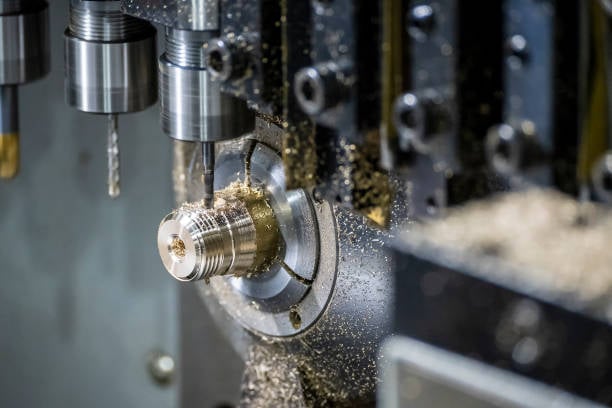Understanding Surface Coating Processes: A Comprehensive Overview
Surface coating processes play a vital role in enhancing the durability and aesthetics of various materials. Whether it's for protection against corrosion, improving appearance, or adding functionality, surface coatings have become an integral part of many industries. In this article, we will delve into the different aspects of surface coating processes and explore their applications, benefits, and the various techniques involved. Let's dive in!
The Importance of Surface Coating Processes
Surface coatings are applied to materials to provide a protective layer that shields them from environmental factors such as moisture, chemicals, and abrasion. This not only increases their lifespan but also enhances their performance. Additionally, surface coatings can enhance the appearance of products, making them more visually appealing to consumers.
The Different Types of Surface Coatings
Surface coatings can be broadly classified into two categories: organic and inorganic coatings. Organic coatings, also known as paint coatings, are typically made up of polymers and resins. They are commonly used for decorative purposes and protection against corrosion. Inorganic coatings, on the other hand, include metallic coatings such as zinc or chrome plating, which provide excellent resistance to wear and corrosion.
The Surface Coating Process: Step by Step
The surface coating process involves several steps, including surface preparation, application, curing, and inspection. Surface preparation is crucial as it ensures proper adhesion of the coating to the substrate. This step may involve cleaning, degreasing, sanding, or chemical treatments. The application of the coating can be done through various methods, such as spraying, dipping, or electroplating. Once applied, the coating is cured to achieve its desired properties. Finally, the coated product undergoes a thorough inspection to ensure quality and adherence to specifications.
Surface Coating Techniques: Exploring the Options
There are numerous techniques available for surface coating, each with its own advantages and limitations. Some commonly used techniques include powder coating, electroplating, thermal spraying, and dip coating. Powder coating, for example, involves applying a dry powder to the substrate, which is then cured under heat to form a durable coating. Electroplating, on the other hand, utilizes an electric current to deposit a thin layer of metal onto a substrate.
The Benefits of Surface Coatings
Surface coatings offer a wide range of benefits across various industries. One of the primary advantages is protection against corrosion, which can significantly extend the lifespan of materials exposed to harsh environments. Coatings can also improve chemical resistance, reduce friction, and provide insulation. Additionally, surface coatings can enhance the appearance of products, adding value and appeal to consumers.
Applications of Surface Coatings
Surface coatings find applications in numerous industries, including automotive, aerospace, construction, and electronics. In the automotive industry, coatings are used to protect the body and components from corrosion and abrasion. In aerospace, coatings play a crucial role in enhancing the aerodynamics and durability of aircraft. In construction, coatings are applied to surfaces to provide weatherproofing and resistance to UV radiation. In the electronics industry, coatings are used to protect circuit boards from moisture and improve their performance.
Surface Coating Materials: Exploring the Options
A wide range of materials can be used for surface coatings, depending on the desired properties and applications. Common coating materials include polymers, metals, ceramics, and composites. Polymers are widely used in organic coatings due to their excellent adhesion and flexibility. Metallic coatings, such as zinc or chrome, offer superior corrosion resistance. Ceramic coatings provide high-temperature resistance and durability. Composites, on the other hand, combine the properties of different materials to achieve specific requirements.
Environmental Considerations in Surface Coating Processes
With increasing awareness of environmental sustainability, the surface coating industry has been focusing on developing eco-friendly alternatives. Water-based coatings, for example, have gained popularity as they contain lower levels of volatile organic compounds (VOCs) compared to solvent-based coatings. Powder coatings are also environmentally friendly as they produce minimal waste and can be recycled. Additionally, advancements in coating technologies have led to the development of low-emission coatings that minimize the impact on air quality.
Quality Control and Inspection in Surface Coating Processes
To ensure the effectiveness and durability of surface coatings, rigorous quality control and inspection processes are essential. These processes involve evaluating parameters such as coating thickness, adhesion, hardness, and appearance. Various techniques, including visual inspection, ultrasonic testing, and microscopic analysis, are employed to detect any defects or inconsistencies in the coating. By maintaining high-quality standards, manufacturers can deliver products that meet customer expectations and industry requirements.
The Future of Surface Coating Processes
The surface coating industry is constantly evolving, driven by advancements in materials, technology, and sustainability. Nanocoatings, for example, are gaining prominence due to their exceptional properties, such as self-cleaning, anti-fouling, and antimicrobial capabilities. Additionally, research is being conducted to develop bio-based coatings derived from renewable resources, reducing the reliance on fossil fuels. As industries continue to demand advanced surface coatings, further innovations are expected to revolutionize the field and its applications.

